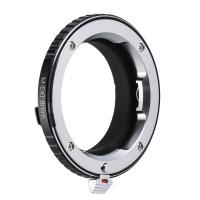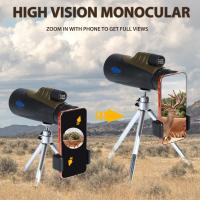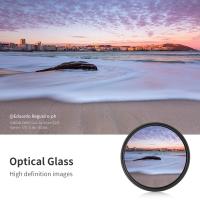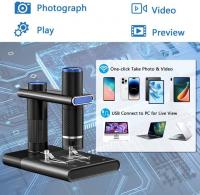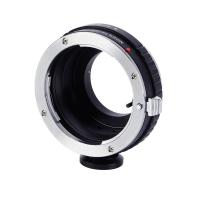How Are Endoscopes Used In Nhs ?
Endoscopes are widely used in the NHS for diagnostic and therapeutic purposes. These instruments are used to examine the internal organs and cavities of the body, such as the digestive tract, respiratory system, and urinary tract. Endoscopes are equipped with a camera and a light source, which allows doctors to visualize the internal structures of the body and identify any abnormalities or diseases.
Endoscopes are used in a variety of medical procedures, such as colonoscopies, gastroscopies, bronchoscopies, and cystoscopies. These procedures are used to diagnose and treat a range of conditions, including cancer, ulcers, polyps, and infections. Endoscopes are also used to perform minimally invasive surgeries, such as removing gallstones or repairing a hernia.
Overall, endoscopes are an essential tool in modern medicine, and their use in the NHS has revolutionized the way doctors diagnose and treat a wide range of medical conditions.
1、 Diagnostic endoscopy for gastrointestinal disorders
Endoscopes are widely used in the NHS for the diagnosis and treatment of gastrointestinal disorders. Diagnostic endoscopy is a minimally invasive procedure that allows doctors to examine the inside of the digestive tract using a flexible tube with a camera and light source at the end. This procedure is used to diagnose a range of conditions, including ulcers, inflammation, polyps, and cancer.
Endoscopes are used in the NHS to perform a variety of procedures, including upper gastrointestinal endoscopy, colonoscopy, and flexible sigmoidoscopy. These procedures are performed by trained specialists, such as gastroenterologists, who use the endoscope to examine the lining of the digestive tract and take biopsies if necessary.
In recent years, there has been a growing trend towards the use of advanced endoscopic techniques in the NHS. These techniques include endoscopic ultrasound, which allows doctors to examine the layers of the digestive tract and surrounding tissues, and endoscopic mucosal resection, which is used to remove abnormal growths from the lining of the digestive tract.
The use of endoscopes in the NHS has several advantages over traditional diagnostic methods. Endoscopy is a minimally invasive procedure that can be performed on an outpatient basis, which means that patients can return home on the same day. It also allows doctors to obtain a more accurate diagnosis, which can lead to more effective treatment and better outcomes for patients.
In conclusion, endoscopes are an essential tool in the diagnosis and treatment of gastrointestinal disorders in the NHS. With the development of advanced endoscopic techniques, the use of endoscopes is likely to become even more widespread in the future.
2、 Endoscopic retrograde cholangiopancreatography (ERCP) for bile duct and pancreatic disorders
Endoscopes are widely used in the NHS for a variety of diagnostic and therapeutic procedures. One such procedure is Endoscopic retrograde cholangiopancreatography (ERCP), which is used to diagnose and treat bile duct and pancreatic disorders.
During an ERCP procedure, an endoscope is inserted through the mouth and into the duodenum, where it can access the bile duct and pancreatic duct. A contrast dye is then injected into the ducts, allowing the physician to visualize any abnormalities or blockages. If a blockage is found, the physician can use the endoscope to remove it or place a stent to keep the duct open.
ERCP is commonly used to diagnose and treat conditions such as gallstones, pancreatitis, and pancreatic cancer. It is also used to treat complications from surgery or trauma to the bile duct or pancreas.
In recent years, there has been a shift towards using minimally invasive techniques for ERCP procedures, such as using smaller endoscopes or performing the procedure through the nose instead of the mouth. This has led to shorter recovery times and fewer complications for patients.
Overall, endoscopes are an essential tool in the NHS for diagnosing and treating a wide range of conditions, including those related to the bile duct and pancreas. ERCP is just one example of how endoscopes are used to improve patient outcomes and quality of life.
3、 Bronchoscopy for respiratory disorders
Endoscopes are widely used in the NHS for the diagnosis and treatment of various medical conditions. One of the most common applications of endoscopes is in bronchoscopy for respiratory disorders. Bronchoscopy is a procedure that involves the insertion of a flexible or rigid endoscope into the airways to examine the lungs and diagnose respiratory conditions.
During a bronchoscopy, the endoscope is inserted through the nose or mouth and passed down the throat and into the airways. The endoscope has a camera attached to it, which allows the doctor to see the inside of the airways on a monitor. The doctor can also take tissue samples or perform other procedures using specialized instruments that are passed through the endoscope.
Bronchoscopy is used to diagnose a range of respiratory conditions, including lung cancer, infections, and inflammation. It can also be used to remove foreign objects from the airways, such as food or other debris.
In recent years, there have been significant advancements in endoscopic technology, which have improved the accuracy and safety of bronchoscopy procedures. For example, the development of virtual bronchoscopy allows doctors to create 3D images of the airways, which can help with diagnosis and treatment planning. Additionally, the use of advanced imaging techniques, such as fluorescence bronchoscopy, can help doctors identify abnormal tissue and tumors more easily.
Overall, endoscopes are an essential tool in the diagnosis and treatment of respiratory disorders in the NHS. With ongoing advancements in technology, endoscopic procedures are becoming safer, more accurate, and more effective, which is good news for patients with respiratory conditions.
4、 Cystoscopy for urinary tract disorders
Endoscopes are widely used in the NHS for the diagnosis and treatment of various medical conditions. One such condition is urinary tract disorders, which can be diagnosed and treated using a procedure called cystoscopy. Cystoscopy is a minimally invasive procedure that involves the use of an endoscope to examine the bladder and urethra.
During a cystoscopy, a thin, flexible tube with a camera on the end (endoscope) is inserted into the urethra and guided into the bladder. The camera allows the doctor to see the inside of the bladder and urethra, and any abnormalities or issues can be identified. The procedure can be performed under local or general anesthesia, depending on the patient's preference and the complexity of the case.
Cystoscopy is commonly used to diagnose and treat urinary tract disorders such as bladder cancer, urinary tract infections, bladder stones, and urinary incontinence. It is also used to monitor the progress of treatment for these conditions.
The latest point of view on the use of endoscopes in cystoscopy is that it is a safe and effective procedure that can be performed on an outpatient basis. The use of advanced imaging technology and high-definition cameras has improved the accuracy of the procedure, allowing doctors to identify and treat urinary tract disorders more effectively.
In conclusion, endoscopes are an essential tool in the diagnosis and treatment of urinary tract disorders in the NHS. Cystoscopy is a minimally invasive procedure that can be performed on an outpatient basis, and the latest advancements in technology have improved its accuracy and effectiveness.
















